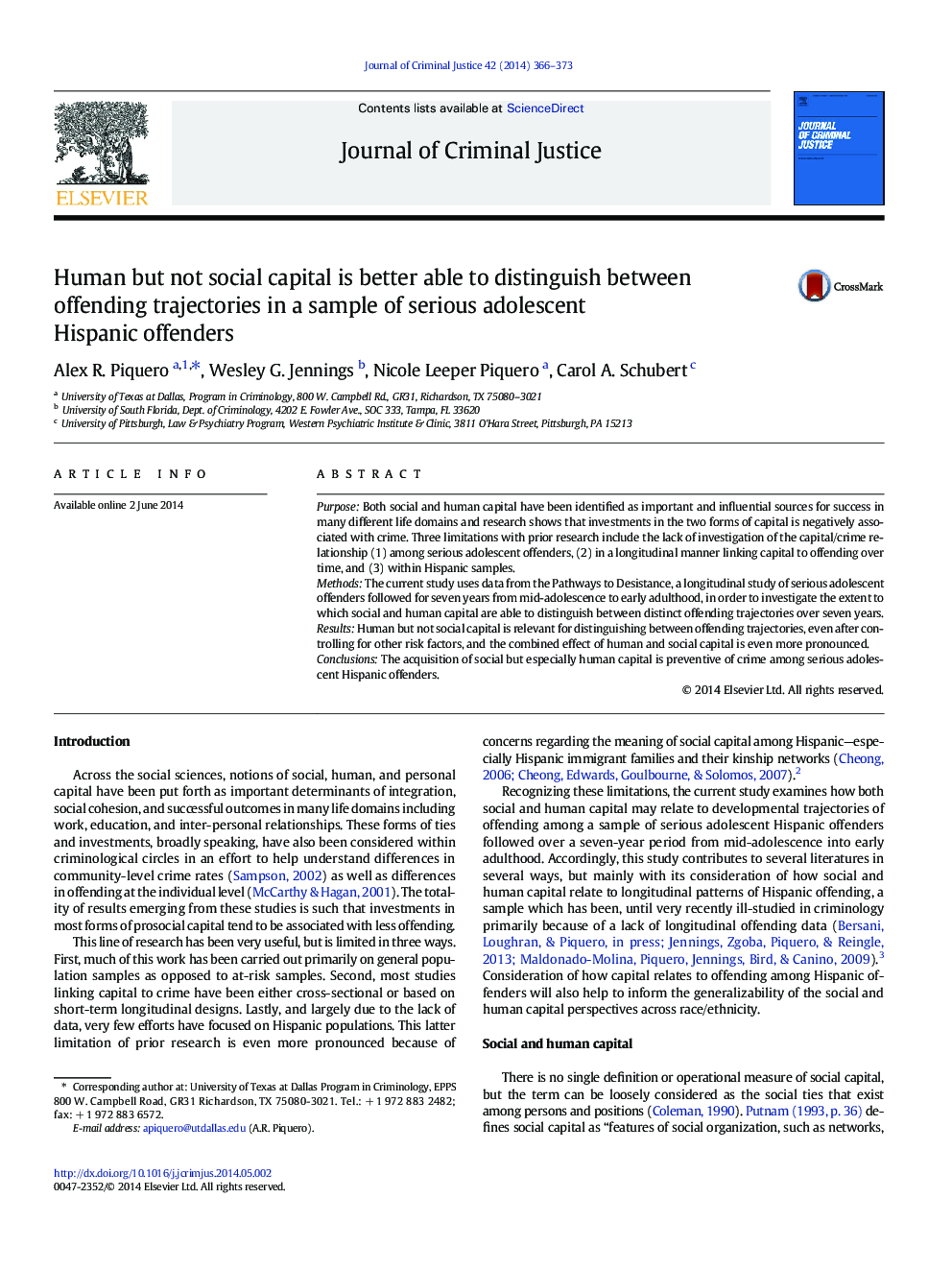| کد مقاله | کد نشریه | سال انتشار | مقاله انگلیسی | نسخه تمام متن |
|---|---|---|---|---|
| 882676 | 912012 | 2014 | 8 صفحه PDF | دانلود رایگان |
• Three offending trajectories of Hispanic male offending were found.
• Human but not social capital distinguishes between offending trajectories.
• A combined human and social capital effect best distinguished offending trajectories.
PurposeBoth social and human capital have been identified as important and influential sources for success in many different life domains and research shows that investments in the two forms of capital is negatively associated with crime. Three limitations with prior research include the lack of investigation of the capital/crime relationship (1) among serious adolescent offenders, (2) in a longitudinal manner linking capital to offending over time, and (3) within Hispanic samples.MethodsThe current study uses data from the Pathways to Desistance, a longitudinal study of serious adolescent offenders followed for seven years from mid-adolescence to early adulthood, in order to investigate the extent to which social and human capital are able to distinguish between distinct offending trajectories over seven years.ResultsHuman but not social capital is relevant for distinguishing between offending trajectories, even after controlling for other risk factors, and the combined effect of human and social capital is even more pronounced.ConclusionsThe acquisition of social but especially human capital is preventive of crime among serious adolescent Hispanic offenders.
Journal: Journal of Criminal Justice - Volume 42, Issue 4, July–August 2014, Pages 366–373
